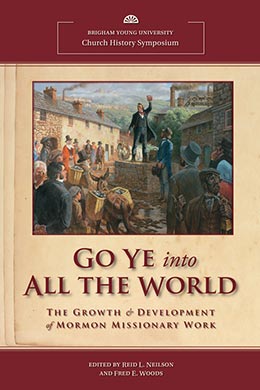“Remember the New Covenant, Even the Book of Mormon” (D&C 84:57)
John P. Livingstone and Richard E. Bennett
John P. Livingstone and Richard E. Bennett, "'Remember the New Covenant, Even the Book of Mormon' (D&C 84:57)," in Go Ye into All the World: The Growth and Development of Mormon Missionary Work, ed. Reid L. Neilson and Fred E. Woods (Provo, UT: Religious Studies Center, 2012), 45–63.
John P. Livingstone was an associate professor of Church history and doctrine at Brigham Young University when this book was published.
Richard E. Bennett was a professor of Church history and doctrine at Brigham Young University when this book was published.
And again, the elders, priests and teachers of this church shall teach the principles of my gospel, which are in the Bible and the Book of Mormon, in the which is the fulness of the gospel. (D&C 42:12)
The Book of Mormon is perhaps the most powerful missionary tool beyond the missionary him- or herself. It stands as tangible proof in the hands of investigators that God has spoken again in our day. People can hold it in their hands, read it, and judge for themselves whether or not it is true. This has been true since the publication of the very first edition of the Book of Mormon on March 26, 1830. While early LDS writers may not have quoted individual verses prolifically, the Book of Mormon certainly played a critical role in the lives of early converts to the Church. Some writers have suggested that the Book of Mormon was not a particularly strong missionary tool in the early days of the Restoration. [1] This chapter will endeavor to show that it made a significant difference in the work of the missionaries who used it, as well as in the lives of their converts. Of course, not all who received and read the Book of Mormon were impressed or had life-changing experiences, but those who did have such experiences stand as witnesses of how it affected them and their families.
Solomon Chamberlain
The earliest missionary of the Church to publicly teach about the Book of Mormon may very well have been Solomon Chamberlain. Even before the book was published and the Church organized, Solomon was traveling on the Erie Canal (which went through Palmyra, New York) and felt that the “Spirit told me to leave the boat.” [2] He walked until he stopped at a home where people were talking about a “gold bible,” or the Book of Mormon. He reported, “When they said Gold Bible, there was a power like electricity went from the top of my head to the end of my toes. This was the first time I ever heard of the Gold Bible. I was now within half a mile of the Smith family where Joseph lived. From the time I left the boat until now, I was wholly led by the Spirit.” [3]
Solomon actually visited the Smith home and listened to Hyrum Smith recount Joseph’s experiences. At the time, the Book of Mormon manuscript was being printed at the Egbert B. Grandin shop in Palmyra. Within two days, sixty-four pages had been printed, and the Smiths gave Solomon a copy of the uncut proof sheets to take with him when he left. He said, “I took them with their leave and pursued my journey to Canada, and I preached all that I knew concerning Mormonism, to all both high and low, rich and poor, and thus you see this was the first that ever printed Mormonism was preached to this generation.” [4] He did not have any printed missionary lessons, but he had sixty-four pages of the Book of Mormon. And that was good enough for him. The Spirit sustained him, and Solomon stayed true to the Church until he died years later in Washington County, Utah, in 1881.
Parley P. Pratt
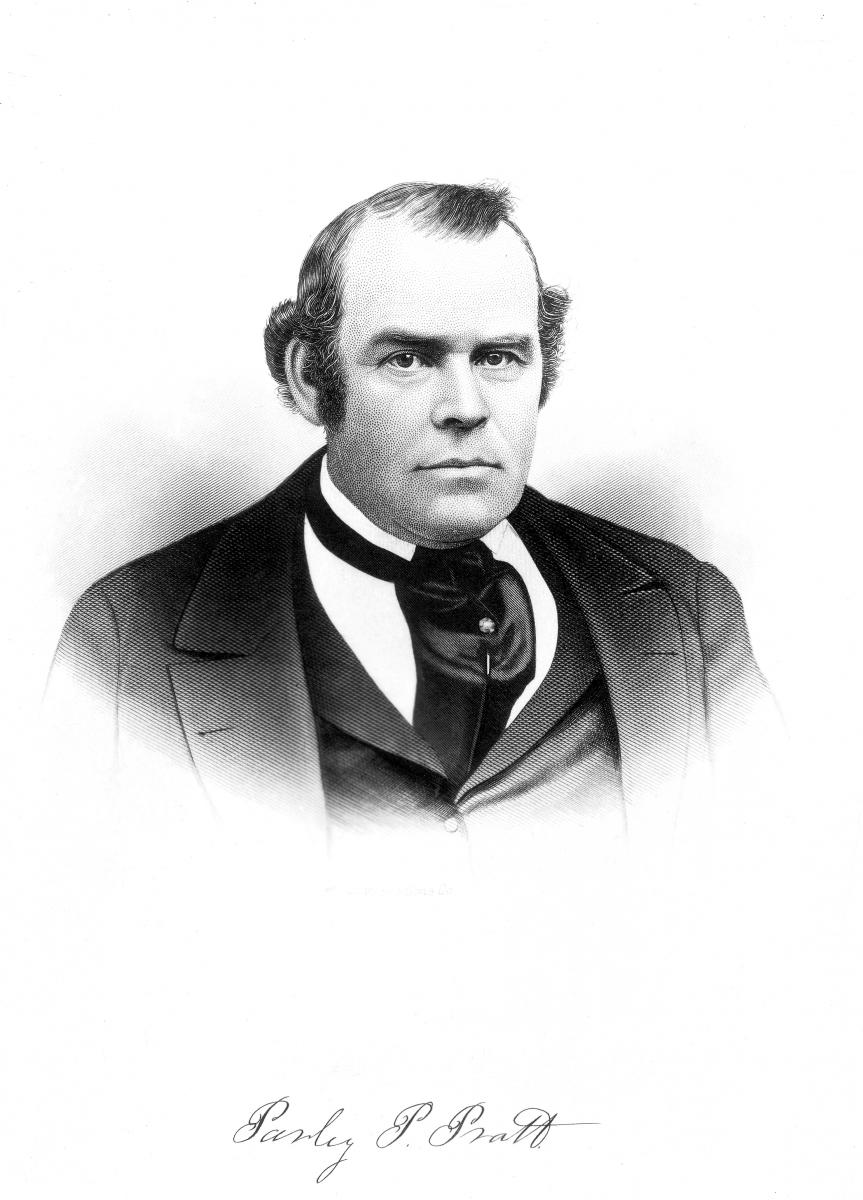 Parley P. Pratt. © Intellectual Reserve, Inc.
Parley P. Pratt. © Intellectual Reserve, Inc.
Parley P. Pratt offered his experience with reading the Book of Mormon for the first time in 1830. He said,
I opened it with eagerness, and read its title page. I then read the testimony of several witnesses in relation to the manner of its being found and translated. After this I commenced its contents by course. I read all day; eating was a burden, I had no desire for food; sleep was a burden when night came, for I preferred reading to sleep.
As I read, the spirit of the Lord was upon me, and I knew and comprehended that the book was true, as plainly and manifestly as a man comprehends and knows that he exists. My joy was now full, as it were, and I rejoiced sufficiently to more than pay me for all the sorrows, sacrifices, and toils of my life. [5]
Personal revelation burns deep into the heart and soul and makes one an independent witness of the reality of God. No intellectual persuasion or peer pressure can nullify it. A person knows the truth and knows he knows it. It is incontrovertible. It is a highly personal, sacred thing. And when the Book of Mormon is read and prayed over, it makes for wonderfully strong converts who are well retained in the kingdom. They know for themselves that the gospel is true, and they are not easily dissuaded by pressure from skeptical family members, friends, or even anti-Mormon literature.
Joseph Holbrook
Another early convert, Joseph Holbrook, left a detailed journal in which he recounts his feelings about the Book of Mormon. He said he first heard of a group called the “Mormonites” in about 1832 and wished to know more about their beliefs. So he went to a Mormon meeting, but it fell through because the speaker was unable to make it. He talked to others who had come to attend the meeting and asked where he could get his hands on a Book of Mormon. In fact, he said he would walk fifty miles to get one if someone could tell him where to go. His cousin Mary Ann Angel heard of his interest and told him he could borrow her copy in about two weeks since she had promised others they could look at it first. Joseph could hardly wait and asked if he could just look at it. Mary Ann took him home, and there he handled the book and read the account of the witnesses to the gold plates from which the Book of Mormon was translated. The two weeks went by, and Mary Ann kept her word. She left the book with Joseph, and he recorded this interesting account of becoming fascinated with the Book of Mormon:
This was on Friday and I commenced reading that evening, but being brought up not to spend any time on a weekday to read, I thought I must work and as my cart was in the field where I left it the day before where I was digging potatoes, I went to digging potatoes, but soon found I could not content my mind at work.
I returned to the house, took the Book of Mormon, and read for a few hours but as this was so unusual a thing for me to stop work in the daytime, my wife became alarmed and thought I had better be at work than spending the time reading such deception, which called my attention again to my potato digging. I had not dug long before I wished with all my heart I knew all there was in that book. I went out into a large place nearby where the thistles were very large and thick. I knelt down to pray. I no sooner closed my eyes than it seemed as though the whole thistle plantation was in motion. I opened my eyes. I could see nothing the matter. I closed my eyes the second time when it seemed as if there was a whistle wind among the thistles, yet I felt no wind. I continued my prayer for the forgiveness of my sins and for the Lord to lead me right and show me the truth of Mormonism. When I rose, I said I would go to the house and read the Book of Mormon, work or no work. This was the after-part of Saturday. I read that day and night late. On Sunday, I read again. My wife took the child in the morning and went about 3/
4 mile to my brother’s, saying she would not be in the house and hear such nonsense. I read and prayed a number of times that day, being all alone and marveled much that the thistle should be so troubled at my prayers and my wife should be so disturbed she could not stay at home for she was always fond of sitting down and reading evenings and Sundays. I read the Book of Mormon through in two days and three nights and carried it home on a Monday morning to my cousin, Mary Ann Angel. She asked me what I thought of it. I told her I believed it was true and that God was at the bottom of the work.
The Spirit clearly settled on Joseph Holbrook and fired his interest in reading the Book of Mormon and knowing for himself that it was truly scripture from God. And that’s what often happens to investigators. They read, and the Spirit of God comes upon them, and they cannot let go of it. Some just have to keep reading. They are spiritually thrilled with what they are feeling as they read. It is not the suspense of a mystery novel or a science fiction thriller that holds them to the pages. It is a spiritual phenomenon.
George Morris
Another early member, George Morris, was working in his shoe shop in England in March 1841, when he heard children outside his open door talking about “dippers.” As he listened, he realized they were talking about missionaries who had come from America and had dipped, or baptized their converts by immersion. The children mentioned how the missionaries were speaking in tongues, and Brother Morris tried to get them to imitate the sounds the missionaries were making. He decided to visit one of the missionaries’ meetings the following week. And he was impressed.
Borrowing a copy of the Book of Mormon from one of the elders, he began to read “very earnestly and prayerfully.” He said, “I had not read far before the spirit of the Lord bore testimony to me that it was the truth of heaven.” As he read, he commented that he “read it through and got testimony after testimony concerning the truth of the work and divine authenticity of the Book of Mormon and concerning a Prophet, Seer and Revelator having been raised up in those last days with all the power, authority and Priesthood necessary to build up the church of Christ upon the earth.” He even walked eight miles to attend a meeting followed by a kind of “break-the-fast,” where the Saints held a “tea” after a fast and testimony meeting. But, he noted, “there was no tea there; they had hot water with plenty of good cream and sugar and plenty of something good to eat. I partook with them as though I had been one of them, and felt in my heart that it was the richest feast in my life, and the best company that I had ever enjoyed.”
George knew the Book of Mormon was true and a week or two later took some time one Sunday to go alone to a quiet riverbank area to meditate and pray about this new religion. He said he lay on the ground and pleaded with the Lord to forgive him of his many sins and weaknesses, covenanting that he would live the gospel and do his best to keep the commandments of God. He said it was “one of the most refreshing seasons that I ever experienced in my life, for my soul was truly humble before the Lord.” [6] He knew he was ready for baptism.
John Murdock
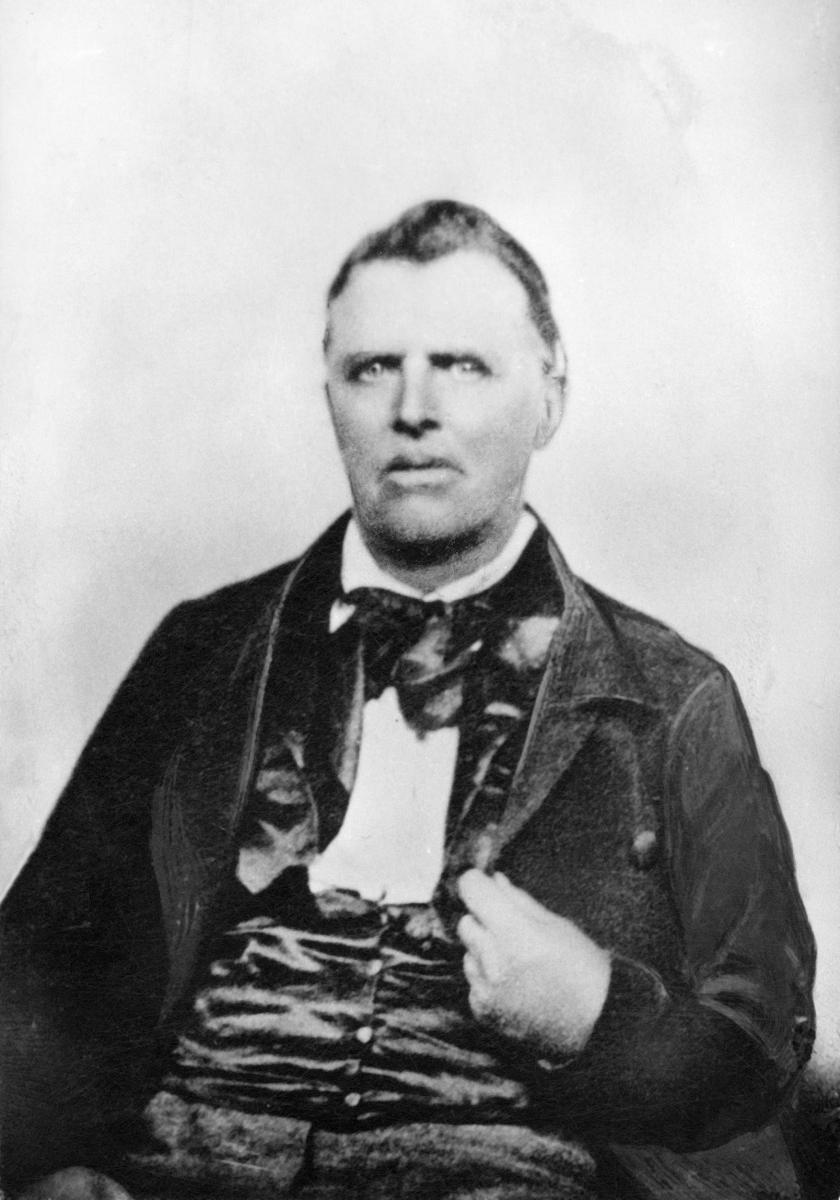 John Murdock. © Intellectual Reserve, Inc.
John Murdock. © Intellectual Reserve, Inc.
Some early investigators actually recognized the Book of Mormon as the test of the truthfulness of the gospel. Such was the case for John Murdock. Brother Murdock’s wife had died shortly after they joined the Church in Kirtland, and he tenderly gave his infant twins (a boy and a girl) to Joseph and Emma Smith to adopt after the death of their own twins during childbirth. It was John Murdock’s little boy who would later die from exposure and the subsequent illness that occurred when Joseph was violently taken from the John Johnson home in the middle of the night to be tarred and feathered.
Previously, Brother Murdock had heard about the arrival in Kirtland, Ohio, of the first four official missionaries of the Church who had come from New York State. They were Oliver Cowdery, Parley P. Pratt, Peter Whitmer Jr., and Ziba Peterson. He was somewhat skeptical when he was first told about the four men and their “new gospel.” He held back his judgment until he could meet and hear them. It was when he heard them talk about the Book of Mormon that he felt like it was the evidence he needed to determine whether or not they were true missionaries sent from God: “I now said within myself, I have items placed before me that will prove to me whether it be of God or not: [Here are] four men professing to be servants of the most high God, authorized to preach the gospel, and practice the ordinances thereof, and build up the Church after the ancient order; and having a book professing to have come forth by the power of God, containing the fullness of the gospel; I said if it be so their walk will agree with their profession, . . . the Holy Ghost will attend their ministration of the ordinances, and the Book of Mormon will contain the same plan of salvation as the Bible.” [7]
Clearly, he felt that the message of the missionaries would stand or fall on the truthfulness of the Book of Mormon. If the book was true, then God had indeed spoken again and the Bible was not the final word on God and Christian religion. He studied it carefully, prayed about its truthfulness, and, like many honest truth-seekers, became a staunch member of the Church and a dedicated missionary himself. He would serve several missions and finally make the long trek to the Salt Lake Valley with the rest of the Latter-day Saints.
Noah Packard
Another man affected, though somewhat indirectly, by the mission of the four original missionaries and their Book of Mormon message to the Kirtland area was Noah Packard, who was living in Parkman, Ohio, in 1831. Mrs. William Jolley, an early convert, became a wonderful member missionary to Noah and his wife and emphasized the Book of Mormon in her approach to them. Noah wrote:
About this time Mrs. Jolly presented the Book of Mormon to me and asked me if I would read it; I told her I would, and took it and carried it home and placing the book against my forehead asked secretly the Lord if that work was His, He would make it manifest to me. I then opened the book and commenced reading aloud that my wife might also hear it. We read it through and I commenced reading it the second time and the Lord poured out His spirit upon me and the scriptures were opened to our understanding, and we were convinced that the Book of Mormon was a true record of the Aborigines of America containing the fullness of the gospel of Jesus Christ which was to come forth at the time of the restitution of the house of Israel.
Accordingly I and my wife were baptized in the town of Parkman [Ohio] by Parley P. Pratt and were confirmed in the Church of Jesus Christ of Latter-day Saints, under his hands and Hyrum Smith’s hands. [8]
Joseph Smith
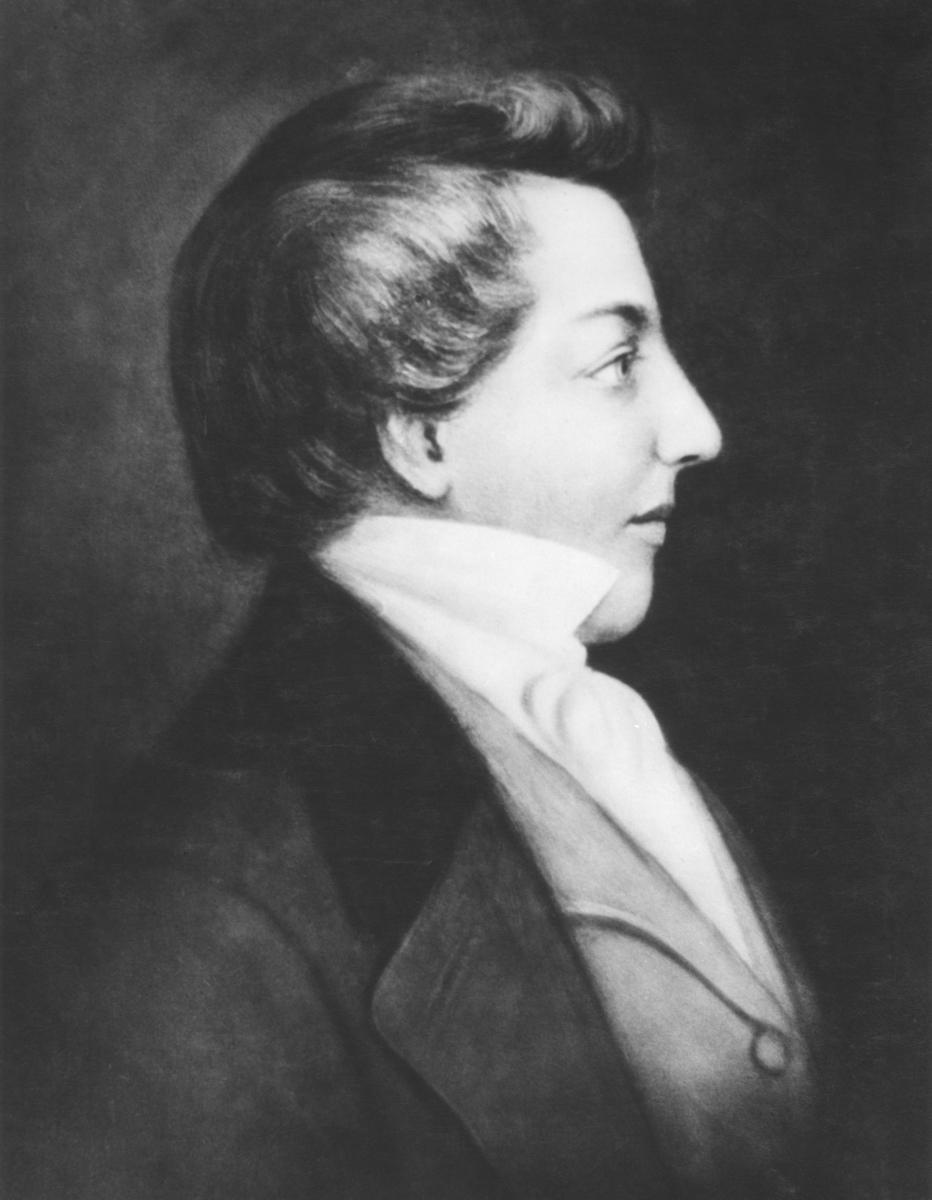 The Prophet Joseph Smith. Design Farm, © Intellectual Reserve, Inc.
The Prophet Joseph Smith. Design Farm, © Intellectual Reserve, Inc.
Joseph Smith himself was open about the Book of Mormon and talked about it with investigators. George Moore, a clergyman from another church, recorded his short meeting with Joseph Smith and how Joseph talked with him about the Book of Mormon and answered a few other questions. Moore had just arrived at the Prophet’s home:
His carriage was at their door and he was about going away, but he received me very kindly, asked me into his house. I remained about 10 minutes. He was very communicative. We conversed about the golden plates, which he professes to have dug up and translated into the Book of Mormon. “Those plates are not now in this country,” he said—“they were exhibited to a few at first for the sake of obtaining their testimony—no others have ever seen them—and they will never again be exhibited.” He showed me some specimens of the hieroglyphics, such as, he says, were on the gold plates. He asked me if I was a Clergyman—and of what denomination—and what were the fundamental doctrines of our faith—on my telling him that we believed in divine Unity—in one God in one person—he said, we don’t agree with you there. We believe in three Gods, equal in power and glory. There are three personages in heaven, but those three are not one. I suppose, from what I hear, that Smith makes it a point not to agree with any one in regard to his religious opinions, and adapts himself to the person with whom he talks for the time being. . . . He expressed a desire to have a long conversation with me, but he had an engagement, and I was soon going away, so that we could not have much conversation. Our interview was short, but pleasant. [9]
David Pettigrew
Like the good reverend, many people were interested in the Book of Mormon in the early days of the Church. Sometimes new members read it and talked about it to others. Those people, in turn, talked about it and even ended up defending the Book of Mormon, which fired their willingness to read it for themselves. A little opposition at times served to strengthen them in their determination to find out for themselves whether or not the Book of Mormon had come from God. David Pettigrew had an experience like that in the early days of the Church. A friend who had joined the Church stopped by on a Sunday to see if he could interest David in reading the Book of Mormon. When he was first handed the book, Brother Pettigrew turned a few pages and, at random, began to read from 2 Nephi 5 while his friend waited quietly. Later he said, “I observed to my wife that I did not think that it was the words of him that had a devil.” He then invited his Mormon friend to come to a group meeting with him. Brother Pettigrew had been leading a Methodist discussion group. He was supervised in that effort by a minister who made a regular circuit from congregation to congregation in that part of the country. He introduced his friend and the Book of Mormon to the group and suggested that a very interesting message had come to him. He also invited his friend to make a few remarks. Afterwards, David commented to the group that they had heard very interesting things and that perhaps they would do well to investigate further whether or not these things were from God. One of his neighbors then arose and called it all a “strange delusion.” David could see that the man was angry—he trembled as he spoke.
A few weeks later, the circuit preacher came by and talked with David about the Book of Mormon. David loaned his copy to the minister and looked forward to his thoughts about it on his next stop through the circuit. On his next visit, the preacher offered a fiery sermon, which ended with a challenge: “After he had gotten through with his sermon he then exclaimed, brother Pettigrew, I now exhort you to call in your neighbors and take your Book of Mormon and burn it as a sacrifice.” The pressure was on. David simply noted, “This gave me peculiar feelings to see a man in the high standing of Doctor Oglesby to treat so lightly upon things which I knew he did not understand.” [10] He knew that Oglesby had not read the Book of Mormon and was just making assumptions about what it was and what it contained. Brother Pettigrew was actually relieved when he was released from his class leadership assignment, and he left to investigate Mormonism for himself. Sometimes that kind of thing happens even today. Investigators get excited about what they are learning, and in trying to share their enthusiasm with others, they get reactively blindsided publicly or privately for even investigating the Church. Members and missionaries would do well to be sensitive to this kind of teasing and cajoling that most investigators experience. It is not unlike the kind of pressure that Latter-day Saints everywhere may have to endure when they get serious about living the gospel and wanting to choose the right. Often, investigators may have very little support from their immediate family and friends as they have these experiences. That is another reason it is a good idea for members to befriend investigators, who can help them through the tough transitional times that always seem to come with joining the Church. In spite of this opposition, which actually tends to strengthen many investigators like David Pettigrew, he reflected, “These things caused me to draw nearer to the Lord, and he to me and he witnessed to me that he had now began his work for the last days, and that the Book of Mormon was the true book and by it I saw that the Lord was the same Lord, and its gospel was the same and its ordinances were the same as those I had been taught to observe.” [11] David Pettigrew subsequently joined the Latter-day Saints, who were then gathering in upper Missouri in 1836.
Zerah Pulsipher
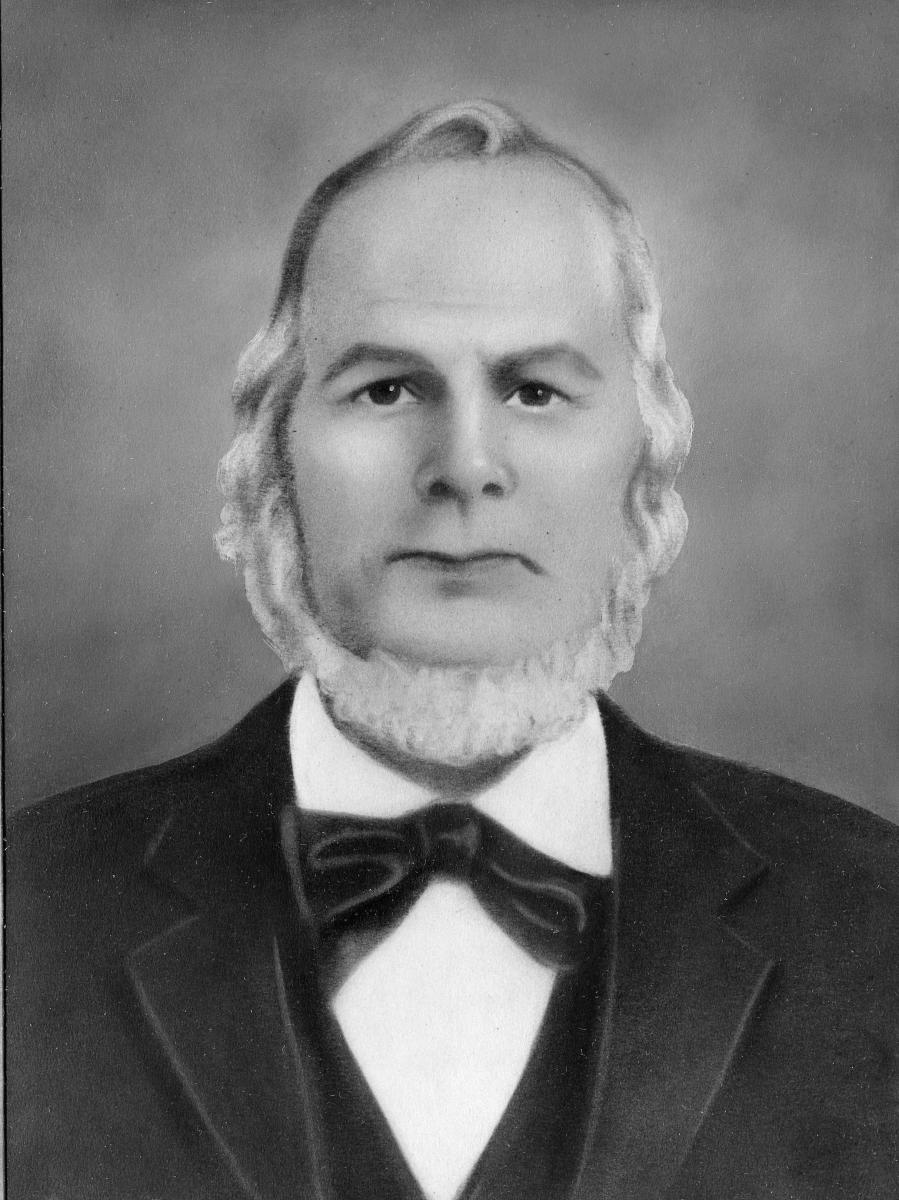 Zera Pulsipher. Courtesy of Church History Library.
Zera Pulsipher. Courtesy of Church History Library.
Some people are spiritually impressed by comments that they hear on the street or in meetings or in the media about the Book of Mormon. For example, Zerah Pulsipher heard about the Book of Mormon barely a year after it was published. He would eventually become the missionary who baptized and confirmed Wilford Woodruff, who became one of the most successful missionaries of all time himself. Reminiscent of Solomon Chamberlain’s experience, Brother Pulsipher recounted, “I heard a minister [speak of] an ancient record or Golden Bible in Manchester near Palmyra which remark struck me like a shock of electricity at the same time thought it might be something that would give light to my mind upon principles that I had been thinking of for years and many times I had remarked that if the pure church with its gifts and graces was not on the earth, if so I had not found it.” [12] It was not long before Zerah Pulsipher said, “There was a Book of Mormon brought in to town[.] I succeeded in getting it[.] I directly read it through twice[,] gave it a thorough investigation and believed it was true.” [13]
A few weeks later, Jared Carter came to town, and Brother Pulsipher went to his first meeting where a Mormon missionary preached. He listened to Elder Carter and rose to address the congregation afterwards: “I arose and said to the congregation that we had been hearing strange things and if true they were of the utmost importance to us. If not true it was one of the greatest impositions and as the preacher had said that he had got his knowledge from heaven and was nothing but a man and I the same, that I had just as good a right to obtain that blessing as he, therefore I was determined to have that knowledge for myself which I considered it my privilege, from that time I made it a matter of fervent prayer.” [14] Clearly, something in Jared Carter’s remarks actually gave confidence that Zerah too could have prayers answered.
Wesley Perkins
Of course, not everyone was positively impressed with the message of the early missionaries. A letter sent in 1832 by Wesley Perkins of Lorain County, Ohio, to Jacob Perkins in Orwell, Rutland County, Vermont, gives a little flavor of some of the negative reactions to early Church activity in Ohio:
As it Respect Religion, in this Town there is Considerable Stir at Present. The Mormon Religion excites the greatest curiosity at Present. Joseph Smith and Sidney Rigdon is the head men in this Business there god is the Devil now but the Simple will embrace thare doctrine if you Could tend one of there meetings & see the young girles have visions it would put you in mind of the Doggs Story I herd you tell, it is paid no attention to only By those who are posessed of a weak minds. I understand that Jared Carter was in Benson & had Baptised a number and would Starte for the promised land in the Spring. It is nothing more than I Should expet of the Carters & some others in that part of Town of Benson whoever joins them will become A Prest or Prophet or A prophetess. I would Send you a paper that contains a letter written by the Rev. E. Boothe. I will send you the letters & you may have them and Sattisfy your Silf Mr. Boothe went to the promiset land. [15]
Ezra Booth was an early member who experienced a shallow conversion, quickly turned from the faith, and began bashing the Church and its members. His produced the first anti-Mormon literature written in modern times.
Erastus Snow
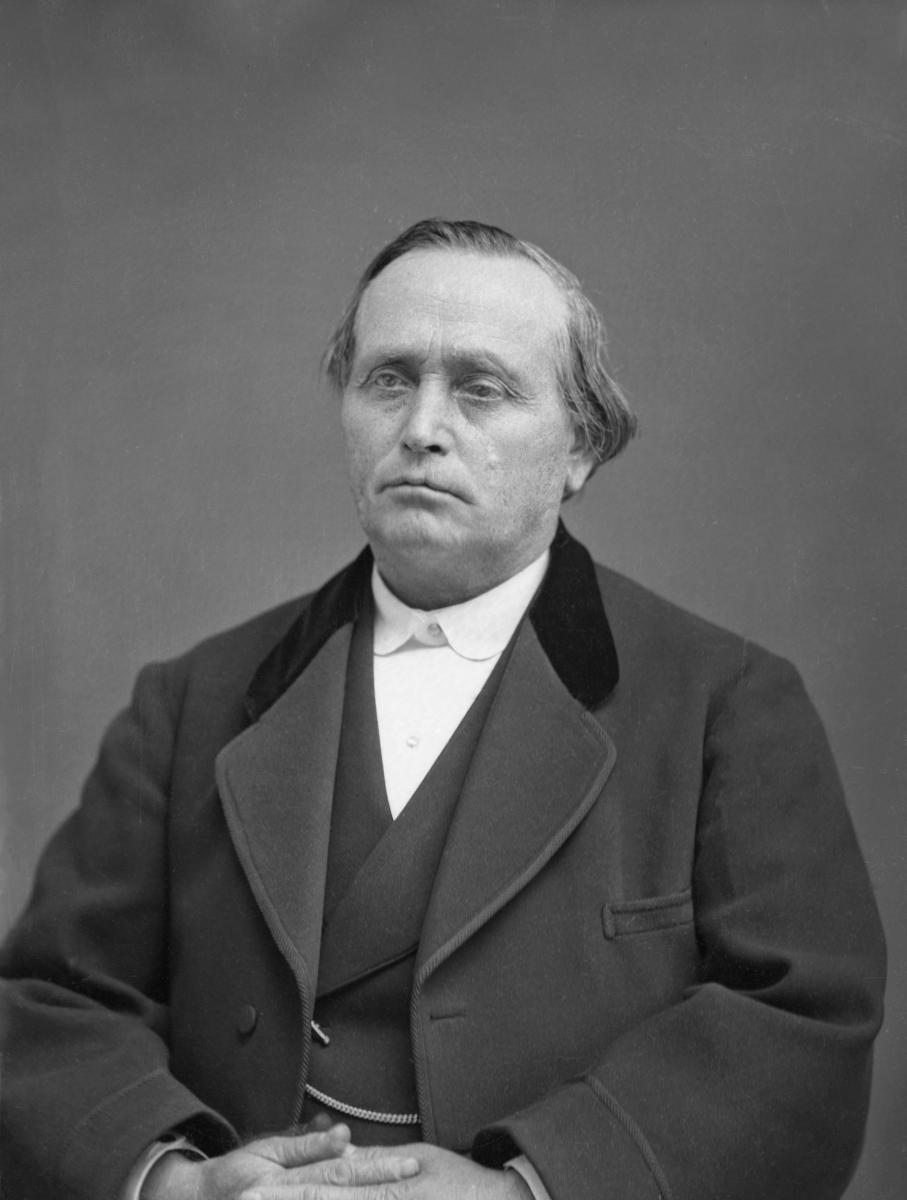 Erastus Snow. © Intellectual Reserve, Inc.
Erastus Snow. © Intellectual Reserve, Inc.
The earliest missionaries of this dispensation usually used public preaching to find investigators. Often, interested individuals or families would invite missionaries to preach in their home, barn, or another building they owned. Sometimes an opponent would arise in the meetings and make things more “interesting.” The preaching would then often take on the appearance of a debate. Sometimes a moderator was chosen and a lively, if more formal, discussion followed. Erastus Snow gave some idea of how the Book of Mormon came up in these venues:
At four o’clock P.M., I attended a meeting at the town house appointed by the Reverend Mr. Roberts of a people styling themselves independent congregationalists for the purpose of proving the Book of Mormon an imposition. I, after hearing him lecture one hour and bring many simple objections, a privilege presenting itself and also being earnestly solicited by my friends, I cheerfully complied with the request and made a reply to his several objections, which lasted one and one-half hours, during which time I adduced several proofs in favor of the book, which drew more remarks from him. The debate lasted three hours until dark, when the people desired to have another meeting to continue the same subject. Accordingly, we appointed the next day at seven o’clock P.M. The next day, the house was greatly thronged and some were around it by the windows on the outside. The house was called to order and a moderator appointed to keep order, the congregation assembly listening with great anxiety while we spoke, each an equal length of time, until twelve o’clock in the evening, in which time I spoke chiefly upon the evidence of the Book of Mormon and of bearing testimony unto it, while the objections brought were very frivolous and easily refuted, chiefly taken from the book of Mormonism Unveiled. I think the investigation left a lasting impression upon many of the truth of the work. [16]
Keeping a crowd interested until midnight seems like quite an accomplishment. No doubt the Book of Mormon was a great “sifter” in that those who read and prayed about the truthfulness of what they read were drawn to the Church. Those who did not take the time to read it and ask God if it was true were seemingly not ready to receive the message of the Restoration. The Book of Mormon was often the main facilitator of the spiritual conversions described.
Anson Call
 Anson Call. Courtesy of Utah State Historical Society.
Anson Call. Courtesy of Utah State Historical Society.
Anson Call described how reading the Book of Mormon created a kind of crisis for him:
In the Elders’ passing through our country they frequently stopped at my house, and in discussing with them upon the principles of the Gospel they would cuff me about like an old pair of boots. I came to the conclusion that the reason of my being handled so easy was because I did not understand the Bible and the Book of Mormon. I resolved to prepare myself for the conflict by investigating the two books. I accordingly furnished myself with the Book of Mormon. I then . . . read my Bible from Genesis right through, praying and searching diligently for 6 months. When I finished the two books I became a firm believer in the Book of Mormon. . . . I was proud and haughty and to obey the Gospel was worse than death. I labored under these feelings for three months, became at times almost insane. To be called a Mormon, I thought, was more than I could endure. I lamented that my lot was cast in this dispensation. My dreams and my meditations made me miserable. I at last covenanted before the Lord that if He would give me confidence to face the world in Mormonism, I would be baptized for the remission of sins; before I arose from my knees the horrors of my mind were cleared; I feared no man nor set of men. [17]
Call was baptized shortly thereafter by William Smith, Joseph Smith’s younger brother, on May 21, 1836. [18]
Conclusion
The promise continues to hold true: “And when ye shall receive these things, I would exhort you that ye would ask God, the Eternal Father, in the name of Christ, if these things are not true; and if ye shall ask with a sincere heart, with real intent, having faith in Christ, he will manifest the truth of it unto you, by the power of the Holy Ghost. And by the power of the Holy Ghost ye may know the truth of all things” (Moroni 10:4–5). We have discussed here several individuals who, after prayerfully reading the Book of Mormon, firmly declared it to be of God. They actively influenced their families and others around them to consider that the Restoration of the Church of Jesus Christ had actually taken place in the early 1800s.
While he was President of the Church, Ezra Taft Benson spoke of the Book of Mormon being the keystone of our religion in three ways: “It is the keystone in our witness of Christ. It is the keystone of our doctrine. It is the keystone of testimony.” [19] It would certainly seem that early Church members learned these lessons in deeply personal ways. Their experiences with reading and studying the Book of Mormon prepared them to participate in establishing the Church and to endure the significant difficulties experienced by all early members who went through the major upheavals and movements so familiar to those interested in Church history. Even though they did not tend to quote chapter and verse from the Book of Mormon, many early members were profoundly affected by their study of the book.
A review of early member and missionary journals shows that the Book of Mormon spoke for itself. More than a mere symbol of the Restoration, it was a powerful instrument of conversion. When it was put into the hands of genuine investigators, the Lord spoke to them through the Book of Mormon. Those who read it with a “sincere heart” and “real intent” as Moroni says (see Moroni 10:3–5), left evidence that they were spiritually affected by what they read. “Book of Mormon converts” were powerfully converted and retained by the spiritual depth of their reading and pondering experiences, even in the earliest days of missionary work at the outset of the Restoration.
As it was in the early nineteenth century, so it has continued into more recent times. Like Anson Call, Catherine Wilma MacDonald Livingstone [20] determined to read both the Bible and the Book of Mormon when being proselyted by her older sister, Florence, who had earlier left the United Church of Canada (their father, Peter MacDonald, was the session clerk of the United Church in Ponoka County in central Alberta) and had joined The Church of Jesus Christ of Latter-day Saints. My mother knew her sister had not read the Bible cover to cover and felt that once she had read both the Bible and the Book of Mormon she would be able to “straighten out” her sister. When she read the Book of Mormon, she said that it felt just like the Bible did, and she came to “know it was true.” It was not quite the outcome she expected, but her diligent scripture reading gave her the knowledge she wanted to be able to judge the truthfulness of her sister’s church.
Notes
Original spelling and punctuation are retained in quotations.
[1] Kent P. Jackson, “Joseph Smith and the Bible,” Scottish Journal of Theology 63, no. 1 (February 2010): 24–40; see also Terryl L. Givens, By the Hand of Mormon: The American Scripture That Launched a New World Religion (New York: Oxford University Press, 2002), 63–65; Grant Underwood, “Book of Mormon Usage in Early LDS Theology,” Dialogue: A Journal of Mormon Thought 17, no. 4 (Autumn 1984): 56–60; and Rex Thomas Price Jr., “The Mormon Missionary of the Nineteenth Century (PhD diss., University of Wisconsin–Madison, 1991).
[2] Solomon Chamberlain, Autobiography, 5, L. Tom Perry Special Collections, Harold B. Lee Library, Brigham Young University, Provo, UT; also found in “Writings of Early Latter-day Saints,” GospeLink (Salt Lake City: Deseret Book Software, 2000).
[3] Chamberlain, Autobiography, 5.
[4] Chamberlain, Autobiography, 5; emphasis added.
[5] Autobiography of Parley P. Pratt (Salt Lake City: Deseret Book, 1985), 18.
[6] George Morris, Autobiography, 13–15, L. Tom Perry Special Collections.
[7] John Murdock, Journal, Harold B. Lee Library, L. Tom Perry Special Collections, 6.
[8] Noah Packard, Autobiography, 3, L. Tom Perry Special Collections.
[9] George Moore, Diary, Western Illinois Regional Studies, 10; also found in “Writings of Early Latter-day Saints.”
[10] David Pettigrew, Journal, n.p., n.d., L. Tom Perry Special Collections; also found in “Writings of Early Latter-day Saints.”
[11] David Pettigrew, Journal.
[12] Zerah Pulsipher, Autobiography, L. Tom Perry Special Collections, 5; also found in “Writings of Early Latter-day Saints.”
[13] Pulsipher, Autobiography, 5.
[14] Pulsipher, Autobiography, 5.
[15] Wesley Perkins to Jacob Perkins, MSS SC 637, L. Tom Perry Special Collections.
[16] Erastus Snow, Journal, 27, L. Tom Perry Special Collections.
[17] Autobiography of Anson Call, July 14, 1843, 18, L. Tom Perry Special Collections.
[18] Thaya Eggleston Gilmore, “Anson Call: Man of Action,” Ensign, July 2001, 39
[19] Ezra Taft Benson, “The Book of Mormon—Keystone of Our Religion,” Ensign, November 1986, 4.
[20] John P. Livingstone’s mother.
